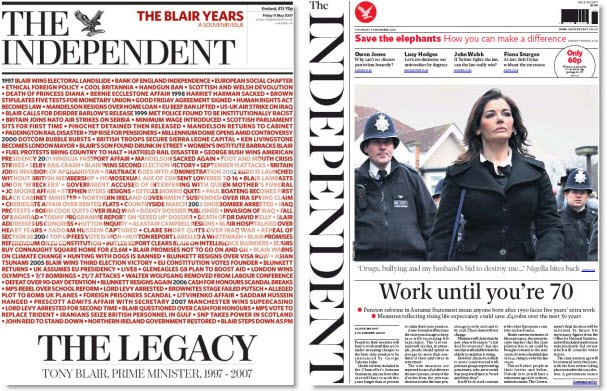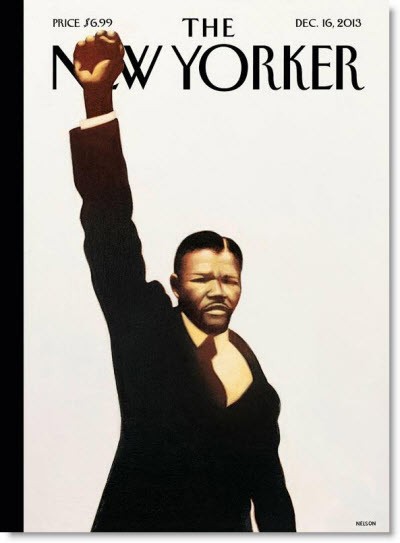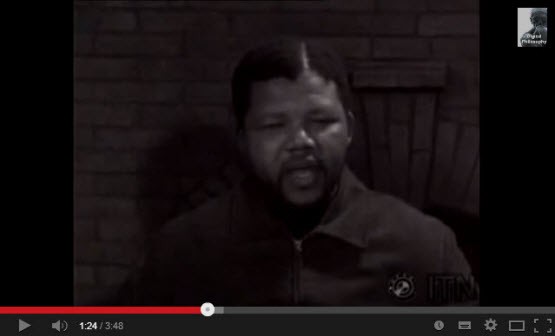Independent. Always. Christmas in London: lights strung across Regent Street, the cheery tubercular cough of the Big Issue sellers, and another makeover of The Independent. The UK’s fourth-placed “quality” daily has been made-over so many times it’s easy to forget that it’s a mere 25-odd years old. What began as a strait-laced broadsheet positioned between the then thoroughly left-wing Guardian and The Daily Torygraph on the Right has plunged every which way in an attempt to hold onto a share of a shrinking market. In the 1990s, its circulation peaked in the 200,000s, when other broadsheets were above the half-million mark. Now, with every circulation heading south, its figures are risible — selling no more than 50,000 copies in a nation of 60 million.
On the way to that figure it has been an uber-serious text-heavy broadsheet — famously consigning celeb and royal news to one column, single para notices — before becoming a ludicrously photo-heavy sensorium of socio-cultural comment under Rosie Boycott. For a while it eschewed news at all, using the front page to run a series of campaigns , a la putting a picture of an otter on the front page with the headline “Suffering”, or some such. At that sad juncture it was bought up by former KGB agent Eugene Lebedev and became a “viewspaper”, doing round-ups of op-ed from round the traps. It had a bold-red masthead, then a dainty one. Then it went tabloid, then it launched a sub-paper, the I, with 200-word pieces, retailing at 20p, hitting 200,000 sales, and cannibalising its readership the process.

Now it’s … well, who knows. It has a vertical masthead, dropping down the side of the front page (Thursday’s edition on the right; a 2007 version on the left), and its regular eclectic series of op-ed columnists — none of them, with the exception of Rupert Cornwell or, occasionally, Robert Fisk, being all that compelling — now have dinkuses drawn in derwent pencil, or so it seems. Apart from that nothing seems to have changed. It is a remodelling so pointless that it seems to constitute a sort of official admission of exhaustion. The Guardian has long since snatched the centrist-left position the Indy once occupied; it urges no great program, campaign or cause. Does its mere existence suggest that there are some things that should just be wound up, so something else can emerge? Fairfax, take note. — Guy Rundle
Drawing Nigella. Nigella Lawson fronted a packed London courtroom yesterday in a trial that is ostensibly about an alleged theft committed by two former employees but has turned into a lurid examination of the celebrity chef’s drug taking. Lawson’s appearance posed a challenge for courtroom illustrators: we’re not sure number two quite captured the famous gourmand …

Video of the day. In his first TV interview, in 1961 with Britain’s ITV, a fugitive Nelson Mandela explains to the world why he is fighting for racial equality in South Africa …
Front page of the day. Quick off the mark, The New Yorker released its cover for next week …









The second sketch of Nigella actually looks like Boy George in a wig.
And the first one looks like “How would I know what happened to my step-daughter Snow White?”